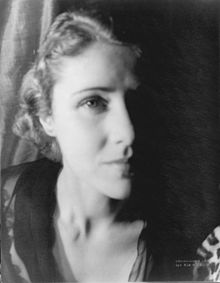Catholic Women and the Public Sphere in Tri-Faith America
I'm happy to introduce our newest contributor today. Karen Johnson is a PhD Candidate in history at
the University of Illinois at Chicago, and is finishing up a dissertation
called “The Universal Church in a Segregated City: Catholic Interracialism in
Chicago, 1928-1963” which looks at the ways Catholics – black and white, men
and women, lay and religious – struggled with one another, their church, and
their city in order create a more just racial order. It argues that race and religion in American
history are inseparable and always affecting one another, and brings religion
into the narrative of the long civil rights movement. Karen lives in Chicago’s Austin neighborhood
with her husband Eric, who teaches high school history (so you can just imagine
their conversations), and German Shepherd Logan, who likes to hunt flies and
take long walks through the city. Her first post today reflects on her panel on Catholic women recently held at the OAH meeting.
Catholic Women and the Public Sphere in Tri-Faith
America at the OAH.
The 2012 OAH in Milwaukee was, of course,
excellent. I had the privilege or
participating on a panel on lay Catholic women and public life in the middle
decades of the twentieth century. What,
you might say, there were Catholic women engaged in the public sphere? As a matter of fact, there were, although
sometimes sources about them can be hard to find.
Mary Henold’s talk, “The Attitude of
Sit-With-Hands-Folded-Until Someone-Tells-Me-What-to-Do-is-Definitely-Not-It:
Margaret Mealey and the Politics of Reform, 1963-1975,” explored the challenges
Henold has had finding sources about how the “women in the pews” responded to
the changes brought about by Vatican II.
Unlike the actors who left nice paper trails that populate Henold’s
first book, Catholic and Feminist,
these actors are somewhat more elusive. Some
sought to redefine what it meant to be a Catholic woman by developing new ways
of serving in church and emphasizing that women must grow up and stop being so
dependent on their pastors and husbands, while others used Vatican II to
justify what they were already doing.
I’m looking forward to Henold’s book about these women in the pews.
Tim Lacy’s “‘A Mind like a Rapier’: Clare Boothe
Luce, Catholicism, and the Public Sphere, 1946-1964” explored the meaning of
Boothe Luce’s conversion to Catholicism.
Boothe Luce was a fiery Republican who converted to Catholicism under
the guidance of Bishop Fulton Sheen (who you might remember as the star of the
T.V. show Life is Worth Living) after
her daughter died in a car accident.
Lacy asked if Booth Luce’s religious conversion changed her
politics. The answer? No.
But she did become a little more humble and subdued. Lacy’s paper raised
questions about the meaning of conversion.
My paper, “Catholic Pioneers of the Civil Rights
Movement: Lay Women, Race, and Interracial Justice” considered Catholic women
and conversion of a different sort: becoming interracialists. It showed how an older generation of black
and white, religious and lay Catholics marshaled the theological resources of
their faith and developed interracial spaces in a highly segregated city where
black and white people could get to know one another. These theologies and spaces enabled Catholic
youth like Peggy Roach and others to change their perspectives about prejudice,
segregation, and discrimination and gain strength to shape their Church, city
and nation.
Jeanne Petite, our commentator, pointed us to the
context linking these groups: the rise of what Kevin Schultz has called
“Tri-Faith America” - and what Will Herberg pointed to in his Protestant Catholic Jew. Together, the panels gave a nice depiction of
the varied forms of Catholics women’s public engagement and pushed forward the
conversation about how gender and race contributed to the shaping of tri-faith
America.
I’d like to give a quick plug for one of the best
panels at the OAH: “The End of the History Survey Course.” The panelists, David Voelker, Joel Sipress,
Nikki Mandell, and Lendol Caulder – all who have published on the scholarship
of teaching and learning - demonstrated how far we’ve come since Caulder’s 2006
JAH article “Uncoverage: Toward a
Signature Pedagogy for the History Survey.”
The panelists reminded us that must stop assuming we can cover
everything; this model is a living fossil of 19th century “scientific”
practices of history. Instead, they
said, we must teach students to think historically by considering the arguments
about the past, the power of stories, and the questions historians ask of the
past. By merging content and skill, we
can offer our students so much more than just material they will memorize for
the test and then promptly forget. We
can help them become thoughtful, knowledgeable, genuine citizens.


Comments